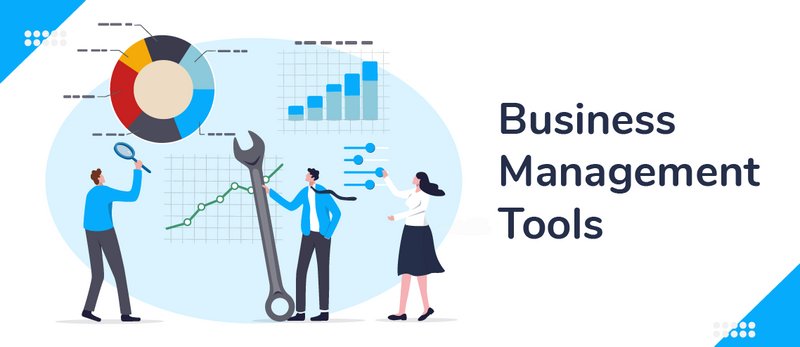How To Streamline Your Small Business with Kanban Workflows

Kanban workflows used to be a foreign concept just a few years ago. However, if you were to ask about Kanban boards to your peers today, they would say that they cannot imagine managing their tasks without one.
Small businesses, where the team follows an iterative process to produce highly functional outcomes, can benefit a lot using workflows visualized through Kanban boards.
In this write-up, you will learn about collaborative workflows, streamlining work processes, visualizing tasks and progress, and how Kanban boards are the way to go if you want to achieve it all.
Why Do I Need To Visualize My Work?
I think we can all say with full confidence that what we see, we can achieve. Visualizing can help teams keep up with their agendas and eliminate the chances of them ever missing their deadlines. Let’s take a look at these few points mentioned below:
> Out of every piece of information that is transmitted to the brain, 90% is all visual.
> Humans can make out data from visual (graphic) scenes in one-tenth of a second.
> When compared to text, images and visuals are processed 60,000times faster.
> In fact, the human eye can register upwards of 36,000 visual messages per hour.
All these facts suggest how important it is that we use this ability to make things easier and more efficient for our teams. This is exactly what Kanban boards can help us achieve – more efficiency, more clarity, and hence come up with more outcomes.
What Does A Kanban Workflow Look Like?
Kanban boards show the procession of tasks through all the different stages that it goes through. Not only does this help maintain progress clarity within the team, but it also helps the manager track every moving task within the project and also keep tabs on time management.
Before we move on to learn how we can map out our workflows using Kanban boards, let us understand why we need workflows in the first place.
Workflows are basically defining the flow of work through stages that a task goes through in the process of completion. It might be a simple set of stages like “ To-do > In-progress > Done” or a more complex one with stages like “Backlog > To-do > Design Development > Testing > Review(1) > Review(2) > Done”
And Kanban boards are what facilitate the visualization of the same.
Additional Reading: Top 15 Small Business Blogs in 2024
Kanban Boards Are A Boon For Your Team; Here’s Why:
Kanban boards help you:
1. Visualize & Manage
By now, we have established that Kanban boards will most definitely help you define and visualize task stages; what we haven’t covered yet is how we will get to visualize tasks. With the help of these elaborate boards, you get to visualize tasks in the form of task cards.
These task cards will be your little containment units containing the description and prerequisites of all that is required for that task’s completion.
Apart from that, Kanban boards will also help you keep tabs on all of your tasks that are yet to be taken up, tasks that are still in progress, and all that have been accomplished.
2. Monitor & Collaborate
Since all Kanban boards actively help visualize all the stages of the tasks, it is easier to keep an accurate record of all that is going on.
If your product is in the design stage, the developers and software engineers are going to be notified when the task reaches them for further deployment.
Every little reasoning aside, visualizing tasks on the basis of their stages and percentage of progress will always help the team monitor progress and get an overview of their daily agenda.
Also, since workflows are a way for the tasks to work freely along a defined path and go to the people who are concerned on their own, it acts like a platform where tasks get added, and the people assigned get notified right away.
Some digital tools out there will help you define the percentage of progress for all your tasks and help the team understand when it is time for them to contribute individually. This will also help you schedule tasks in a more effective way and plan shifts accordingly.
3. Measure & Deliver
Another factor about Kanban boards that makes it such a dependable source for managing tasks is that it helps you identify roadblocks and bottlenecks.
Since you will have an account of how many tasks seem to have accumulated at one place, it would be easier for you to understand the areas of inefficiencies and processes that need smoothening.
This helps teams identify where they are lacking and where there might be a surplus of resources required. In turn, this helps the organization deliver more by acting on areas that are important and prioritize work that needs to be delivered “just in time”
How To Get The Most Out Of Kanban Boards
Kanban boards, as we talked about before, are an exceptional way to visualize information and manage tasks, however, if you come from a self-governing, cross-functional team and want to turn your Kanban boards into the deadliest of weapons, here’s something you must try on for size:
#1 Calculate & Compare Throughput
Throughput can be defined as the total outcome that is generated in a defined amount of time. For example, a content team producing 25 articles per month or a digital marketing team producing about 200 backlinks in a quarter will be their throughput.
If my content team is able to produce 25 articles in a month, I’d expect to see a hike in this number in the next month.
So we’d say there has been a rise in the throughput from 25 in the month of May to 32 in the month of June.
Throughput is one of the parameters that can be easily calculated using Kanban boards. There are many Kanban tools out in the market that will help you calculate and measure work in a more quantifiable way, thus, helping you improve your production and delivery levels.
#2 Set WIP Limits
A work in progress limit is meant to decrease the pressure that lies on the team. Now, envision a board with 7 stages on it:
Backlog > To-do > Design Development > Testing > Review(1) > Review(2) > Done
The problem I am facing is that the task cards progressing towards the last stage always end up getting stuck on the Review(1) stage for quite a long time. There is an easy way to rectify this. All you need to do is set a WIP limit for that particular stage.
Supposing we set a limit of 10 on the Review(1) stage, this will help you ensure that no more than 10 tasks are to be introduced into this particular stage at one time.
These limits also help teams identify bottlenecks and implement various strategies to improve the workflow and work on the reasons for delays.
#3 Increase The Number Of Stages
So we have established that Kanban boards help you visualize and manage tasks; they also help you identify blockages and bottlenecks. Now the way to deal with these blockages and bottlenecks is really easy.
For instance, as we discussed in the point above, bottlenecks can be identified when tasks exceed the / number you have set as the WIP limit. This will help you break your workflow into even more stages.
If the Review stage is your bottleneck, try to break this stage into two parts; if the testing stage is contributing to the delay, you must break this stage into more parts.
#4 Define Work Assignments
Another thing you can do to make the process of Kanban boards easier for you is to allocate work assignments in a more defined way.
Sending around emails or Slack messages is all good; however, task allocation requires a more established and stern approach. For instance, using a project management or a task management tool can allow you to add people to your projects, assign tasks to various teammates, and set reminders with just a few clicks.
Software platforms like ProofHub, Trello, and ClickUp come with advanced Kanban features to help you assign tasks, set deadlines, and add task descriptions on the go. Let’s learn more about these tools with the next point.
#5 Use A Dependable Kanban Tool
Kanban tools that help manage tasks help you visualize your agenda, keep your team in the loop, and manage your people at the same time. These tools are especially advisable for startups and small businesses because they help your teams kick work off on a high note.
These tools will help you visualize the easiest, not to mention elementary elements of tasks. For example, these tools will help you:
- Whip up a workflow,
- Personalize your projects,
- Set up projects on the go,
- Add tasks using shortcuts,
- Maintain transparency among clients,
- Break tasks down into sub-tasks,
- Set up a knowledge base, and
- Document discussions.
There are numerous Kanban tools available in the market that offer exceptional task management properties and relentless support that suit the needs of all small businesses. Additionally, more than most of these tools come with a free trial which will allow you to test these out and decide which one fits the needs of your business.
In Conclusion
Being part of a small business does not mean you get a small to-do list. Kanban boards can help teams visualize tasks, add tasks descriptions and add assignees, and this is basically a weapon that will help you speed things up while also simplifying everything.
JD enjoys teaching people how to use ZoomShift to save time spent on scheduling. He’s curious, likes learning new things everyday and playing the guitar (although it’s a work in progress).



